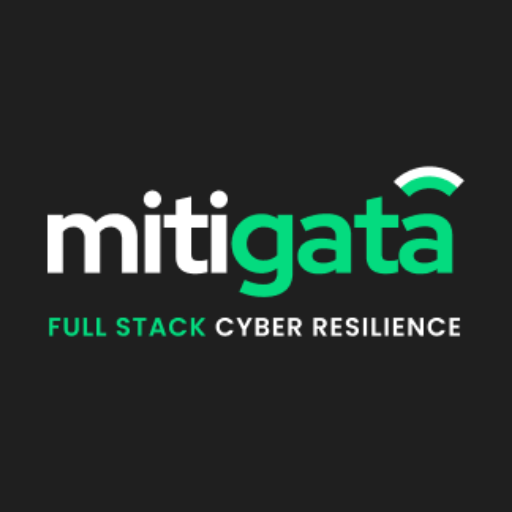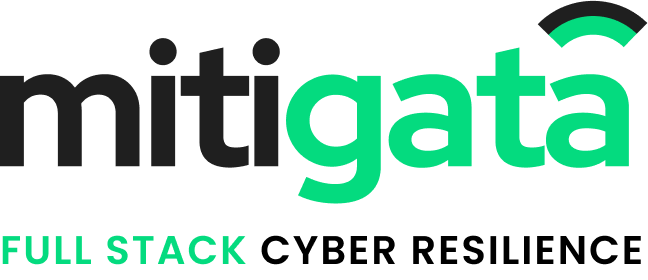Last year, India witnessed 7.4 million cyber incidents, representing a 54% increase over the previous year. The financial industry was among the prime targets, which alone has experienced over 135,000 phishing attacks in the first half of 2024.
In response to this growing threat, SEBI introduced the Cybersecurity and Cyber Resilience Framework (CSCRF). For stockbroker companies, compliance is no longer optional.
Many stockbrokers find it challenging to meet these requirements. Even small gaps, such as missing a VAPT cycle, delaying incident reporting, or failing to maintain a complete asset inventory, can result in significant penalties and damage to reputation.
In this blog, we will explore how CSCRF compliance benefits stockbroking firms and the common challenges they face.
Mitigata’s End-to-End SEBI CSCRF Compliance Experts

SEBI’s Cyber Security and Cyber Resilience Framework implementation requires more than good intentions; it demands technical expertise, substantial resources, and proper execution. Mitigata delivers all three.
India’s premier cyber resilience firm, trusted by 800+ organisations, we take complete responsibility for your CSCRF journey.
While others consult and leave, we execute everything: security assessments, governance establishment, technical implementations, response planning, and monitoring setup—entirely through our in-house team.
Secure Your Business with Complete CSCRF Compliance
Build robust cyber resilience and achieve SEBI CSCRF compliance at 30% lower cost with our enterprise-grade infrastructure and expert teams.

Why organisations partner with us:
Full lifecycle accountability – Single partner for assessment, implementation, validation, and ongoing compliance. Streamlined process, predictable outcomes.
Faster time-to-compliance – Parallel workflows and expert teams ensure you meet SEBI requirements efficiently.
Cost efficiency – Enterprise-grade tools and optimised processes at 30% less than standard market rates.
Comprehensive expertise – 500+ security products plus in-house VAPT and SOC capabilities. No third-party coordination needed.
Trusted experience – 800+ businesses across 25+ sectors rely on our cyber resilience solutions.
What Is SEBI’s CSCRF?
The Cybersecurity and Cyber Resilience Framework (CSCRF) is a framework that has been mandated by SEBI to help improve the cybersecurity posture and operational resilience of all SEBI-regulated entities, including stockbrokers.
The aim is to protect investor data from being breached, stolen, or misused. This ensures operational continuity during cyber incidents and creates uniformity in cybersecurity practices across all stockbroking companies.
Benefits of CSCRF Compliance for Stockbrokers
Meeting SEBI’s CSCRF standards offers several benefits for stockbroking companies. In addition to avoiding fines, safeguarding client information, and fostering trustworthiness. Learn more about the specific advantages.
1. Improved Cyber Resilience
Adopting CSCRF enhances the broker’s security by preventing cyber incidents. The security of trading systems, client information, and brokerage systems reduces the risk of cyber attacks that could potentially lead to breaches and privacy invasions.
- Operational Continuity
CSCRF helps you build solid incident response and business continuity plans, ensuring trading continues uninterrupted even during cyber incidents or system failures. This protects the brokerage firm from financial losses and market disruptions, while also allowing for the protection of client confidence.
- Regulatory Compliance
Compliance enables brokers to adhere to SEBI regulations related to cybersecurity and global best practices. Compliance also reduces the risk of penalties, auditing difficulties, and demonstrates that the firm is conforming to diligent governance practices with respect to security.
- Investor Confidence
Clients want to know that their money and personal information are safe. When you’re CSCRF compliant, you’re showing you care about protecting their assets and privacy. In a market where data breaches frequently make headlines, clients tend to gravitate toward brokers who take security seriously. Your compliance becomes a competitive advantage that attracts and retains investors.
- Market Credibility
Compliance also enhances the firm’s credibility within the financial ecosystem, reflecting professionalism and accountability. When major investors seek brokerage partners, they verify your security credentials. Being CSCRF compliant puts you ahead of competitors who haven’t made that commitment.
Common Challenges in Compliance
Despite the clear CSCRF framework, stockbrokers face multiple challenges while implementing and sustaining compliance:
- Lack of Cybersecurity Expertise
Small brokers may not have the budget to invest in advanced cybersecurity tools or hire dedicated cybersecurity professionals. Even larger firms may still struggle to maintain teams that have the specialised skills necessary for continuous monitoring, incident response and threat mitigation.
- Legacy IT Systems
Many brokers still use older IT infrastructures that were not designed to enable modern cybersecurity controls. Usually, legacy platforms are older and amplify the challenges during the implementation of modern solutions. Solutions such as multi-factor authentication, encryption and real-time monitoring can be difficult and expensive to integrate with legacy platforms.
- Vendor & Third-Party Oversight
Stockbrokers rely on multiple third-party vendors to facilitate things such as trading platforms, cloud services, and KYC/AML processing. Every vendor can represent a potential vulnerability for the stockbroker. In addition to vendors, brokers must ensure that vendors meet the requirements set forth in the CSCRF and compliance standards.
- Continuous Regulatory Changes
SEBI’s regulations evolve as new threats emerge. You receive circulars updating compliance expectations, which means constantly revising policies, updating systems, and retraining staff. Staying current requires dedicated attention and resources.
How Stockbroking Companies Can Ensure Compliance
Gap Assessment: Getting CSCRF compliant starts with knowing where you stand. Run a gap assessment to compare your current setup against SEBI’s requirements. You might find your trading platform is secure, but back-office systems lack encryption or multi-factor authentication. This assessment shows what needs fixing first.
Governance: Governance matters just as much as technology. Appoint a Chief Information Security Officer who owns cybersecurity completely. Form a committee with board representation so security gets proper funding and attention. Document clear policies covering data protection, access controls, and incident response.
Technical Defence: Build layered technical defences. Multi-factor authentication, data encryption, regular security patches, and network segmentation all work together to protect your systems. Set up continuous monitoring through a Security Operations Centre that catches suspicious activity in real time.
Incident Response: Create detailed incident response plans that spell out exactly what happens during a breach: who to notify, how to contain damage, and when to report to SEBI. Test these plans regularly through simulated drills.
Compliance needs an ongoing commitment that protects your business, your clients, and your reputation in an increasingly hostile threat landscape.
Conclusion
Compliance with SEBI’s CSCRF is today’s requirement to protect sensitive investor data, assure business continuity and maintain the integrity of the market. AtMitigata, we make SEBI CSCRF compliance effortless for stockbrokers. Whether you’re behind on VAPT cycles or unsure about your incident response readiness, Mitigata helps you close gaps before SEBI finds them.
Don’t let compliance gaps slow you down. Get SEBI CSCRF ready with Mitigata – 30% faster and smarter.

